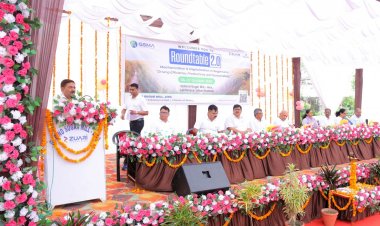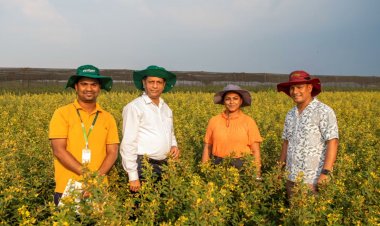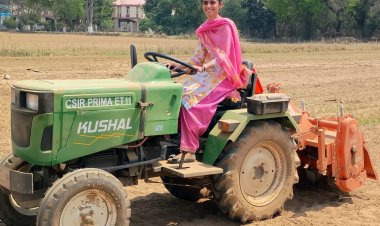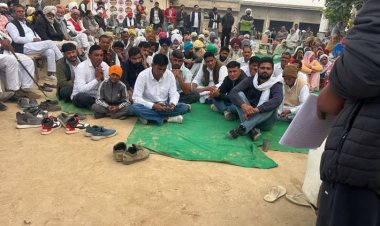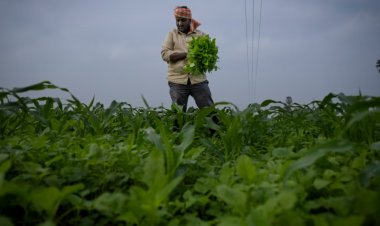Rural Voice Special: Vermicompost cheaper as well as better than chemical fertilizers; a guide to how to prepare it
While chemical fertilizers consist of a maximum of three nutrients, vermicompost has 17 nutrients available for plants. It has all micronutrients necessary for plants in the right proportion. These micronutrients are absorbed by the plants or crops very easily.
The use of chemical fertilizers has an adverse effect both on the soil in the field and the health of the people. Vermicompost is an effective solution to this problem and farmers are beginning to take to it in large numbers. Besides farmers, the unemployed youth can make good money from the commercial production of vermicompost on a large scale. Its raw material, too, is available without much effort. Dr Shivdhar Mishra, Principal Scientist, Indian Agricultural Research Institute (IARI), Pusa, New Delhi, spoke about the vermicompost technology in the Rural Voice Agritech Show. You may watch this episode of the show by clicking on the video link given above.
Dr Shivdhar Mishra said that the dependence of our farming on chemical fertilizers has destroyed the fertility of the soil. The soil has not only lost the essential nutrients for the plants but also good bacteria and micronutrients in large quantities. So, cow-dung manure is considered to be a superior nutrition option for fertile soil and sustainable farming. Vermicompost is made from cow dung with the help of earthworms. The manure gets prepared in relatively less time in this method and is superior in quality.
Comparing vermicompost to chemical fertilizers, Dr Mishra said that while the latter consisted of a maximum of three nutrients, the former had 17 nutrients available for plants. Vermicompost has all micronutrients necessary for plants in the right proportion. These micronutrients are absorbed by the plants or crops very easily.
Methods of vermicomposting
Dr Mishra said that there are several methods of preparing vermicompost. Earthworms get less space in the pit method, so the bed (pile) method is considered better. If vermicompost is prepared in the open, there is a risk of loss. So, it is better to make a specific structure. Those who do not have many resources can pile cow dung under big, shady trees and prepare vermicompost through the pile method. Dr Mishra said that farmers could choose the length and the breadth of the structure as per their convenience. But the height of the pile should not be greater than 1.5-2 feet, otherwise earthworms will not be able to consume the cow dung fully. Eisenia foetida is the earthworm species used most for this purpose because it is very fast at feeding on cow dung and converting it into vermicompost.
Carefulness necessary
According to Dr Mishra, it is necessary to be careful while preparing vermicompost so that no sour thing comes into the cow-dung pile, nor any shard of plastic or glass. 15-day-old cow dung and crop residue are put into the pit or onto the platform and earthworms are released into it. These earthworms feed on the cow dung and prepare vermicompost in 1-1.5 months. Two to three weeks after releasing the earthworms into the cow-dung pile, one gets to see a structure like that of tea pellets. This is called vermicompost. This may be filtered and used or sold as vermicompost.
Dr Mishra said that farmers should use vermicompost along with chemical fertilizers and gradually reduce the consumption of the latter. This will not only maintain the fertility of the soil but also reduce the farmers’ fertilizer cost. According to Dr Mishra, earthworms, which are advantageous to our plants, have become naturally scarce due to the indiscriminate use of fertilizers and pesticides. They are, therefore, reared in a conducive environment.
Lab certificate for sales
Vermicompost has also come under the Fertilizer Control Order, said Dr Mishra. So, if you want to produce and sell it on a large scale, you have to obtain a certificate from an authorized laboratory after getting the product tested. The vermicompost should have components as per the parameters specified by the government. Dr Mishra said that the state governments and the Central government were providing incentives and subsidies for it.
Chanchal Shandilya, a woman entrepreneur and organic farmer from Greater Noida who has taken to vermicompost, told Rural Voice that she makes beds that are 4 feet wide and 30 feet long. She puts one kilogram of earthworms for every foot of the length. Thus, she requires 30kg of earthworms. It takes about 45 days for the vermicompost to get prepared. The earthworms, too, almost treble in number and these can either be sold or used in another bed. Chanchal uses vermicompost in her own fields and sells the remaining at Rs 10 per kg.



 Join the RuralVoice whatsapp group
Join the RuralVoice whatsapp group


















